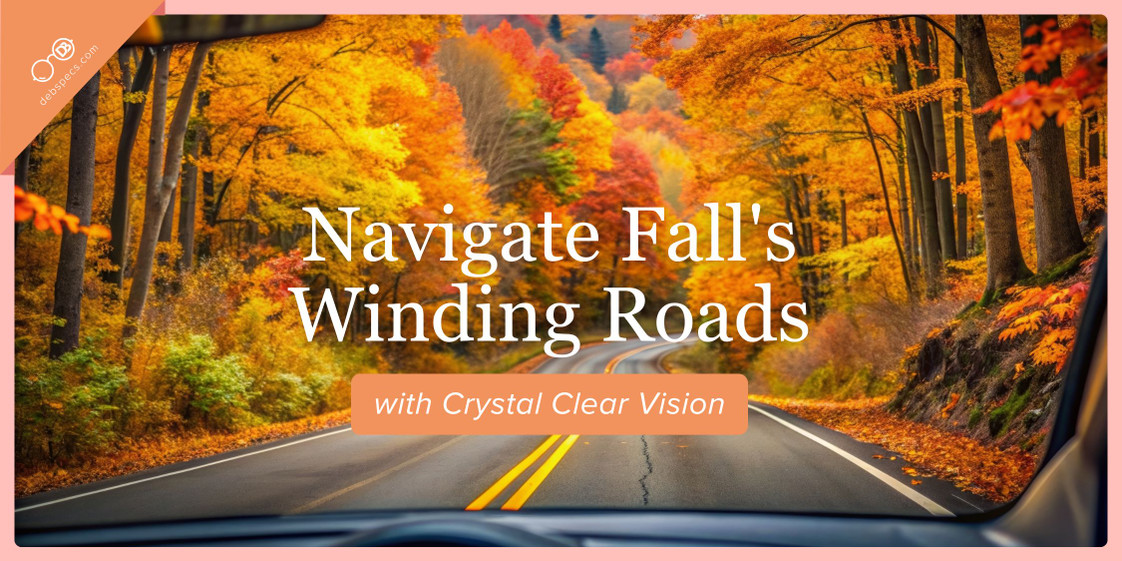
Fall Foliage Road Trips: Essential Reading Glasses for Maps and Scenery
Posted by Team Debby on 10th Oct 2024
Nothing says autumn quite like a road trip framed by fiery reds, golden yellows, and glowing orange leaves. Fall foliage drives are about more than just getting from point A to point B—they’re about savoring the season, taking spontaneous detours, and seeing the world in sharper focus (with the right readers, of course).
Whether you’re following GPS, flipping open a paper map, or reading plaques at scenic overlooks, clear vision makes every mile richer. Let’s dive into how to plan the perfect fall foliage getaway—complete with the eyewear essentials you’ll be glad you packed.
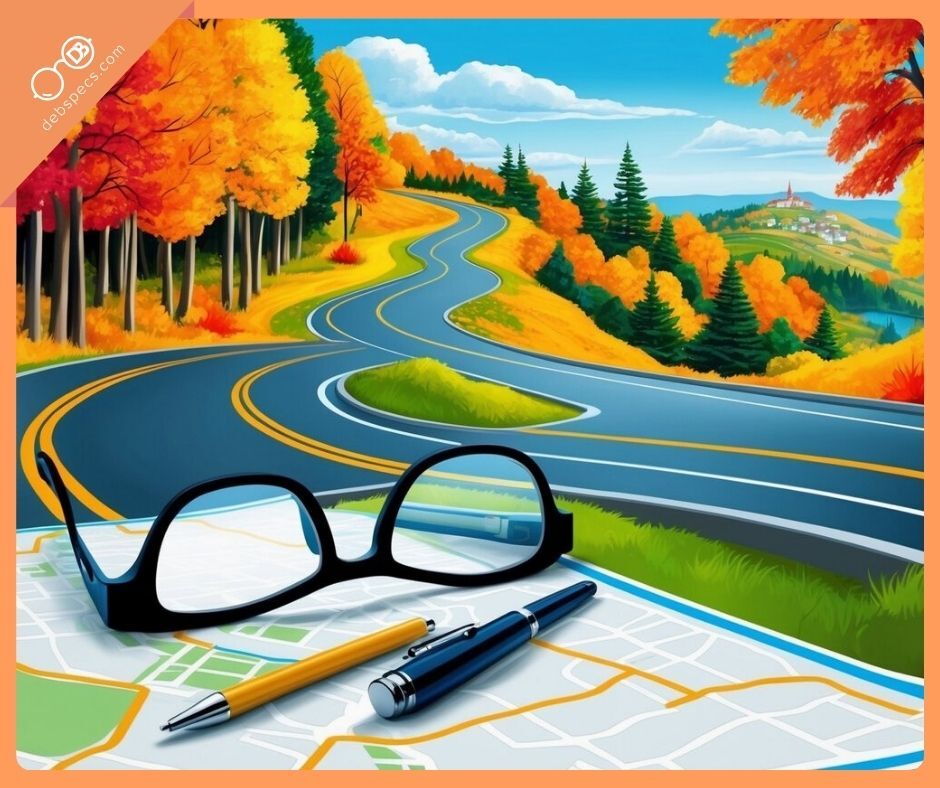
Why Fall Foliage Road Trips Are Worth It
A fall foliage road trip is nature’s runway show. Every forest and hillside transforms into a living painting—one you don’t want to miss. Beyond the beauty, there’s a sense of wonder in learning how and why leaves change color.
- Carotenoids = yellow and orange hues
- Anthocyanins = reds and purples
- Chlorophyll breakdown = the green fades, revealing hidden pigments
Pro tip: Sunny days followed by cool nights give the brightest, most dramatic colors.
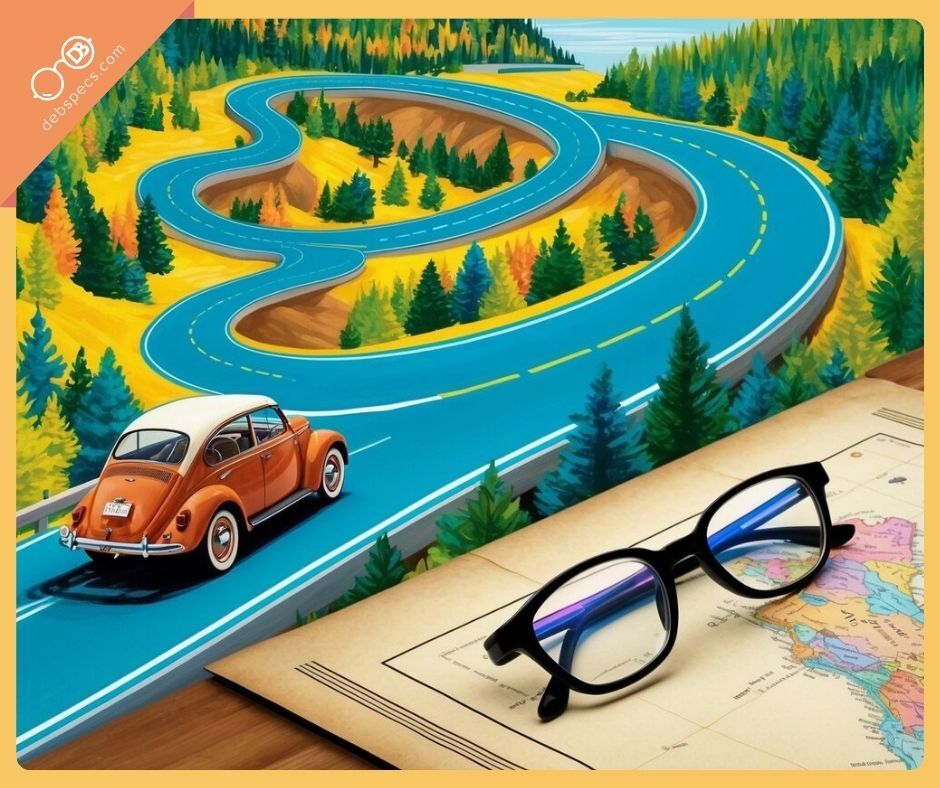
When Different Parts of the Journey Need Different Kinds of Clarity
As the article shows, enjoying fall scenery while also relying on maps or close-up details can place shifting demands on your eyes throughout the trip. Readers designed for focused near vision can help ease strain during those quick moments of close work without interrupting the wider views around you. The options below illustrate how thoughtful lens design can support comfort and clarity across the changing tasks of a road adventure.
When and Where to Catch Peak Colors
Timing is everything. Here’s a quick guide to prime leaf-peeping windows:
- Northeast (Maine, Vermont, New Hampshire): Late September – Early October
- Midwest (Michigan, Wisconsin): Early – Mid October
- West (Colorado, Utah): Late October – Early November
Check regional foliage maps before you go—they update weekly and can help you hit the sweet spot.

Planning Your Trip Like a Pro
A good trip balances adventure with preparation.
- Choose your destination. Northeast for drama, Midwest for charm, West for golden aspens.
- Build your itinerary. Use apps like Google Maps or Roadtrippers, but leave room for spontaneous stops.
- Prep your car. Oil change, tire check, working wipers, full gas tank.
- Pack smart. Layers, snacks, water, chargers, and—yes—your reading glasses.
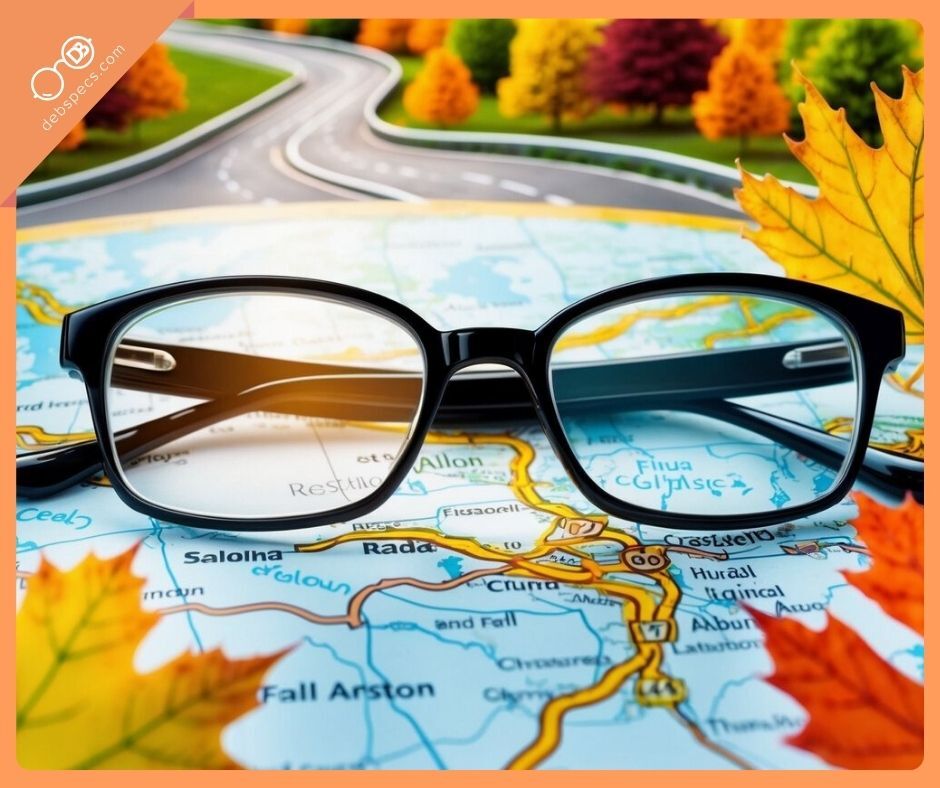
The Role of Reading Glasses on the Road
You might not think of readers as a road trip essential, but they’re just as important as a cozy scarf or travel mug.
- For navigation: Small print on maps and guidebooks is easier with the right magnification.
- For sightseeing: Plaques at overlooks, menus in dim diners, or historical signs all come into focus.
- For comfort: Lightweight, anti-glare lenses (like those from DebbySpecs) prevent eye strain.
Myth: “Any cheap drugstore readers will do.”
Fact: A well-fitted pair with the right magnification keeps you comfortable for hours—and looks far more stylish in your travel photos.
GPS vs. Paper Maps
Both have perks.
- GPS: Real-time traffic, voice directions, alternate routes.
- Paper Maps: No batteries, no signal required, fun for retro travelers.
Best tip? Carry both. Let GPS guide you, but keep a paper backup for rural no-signal zones.
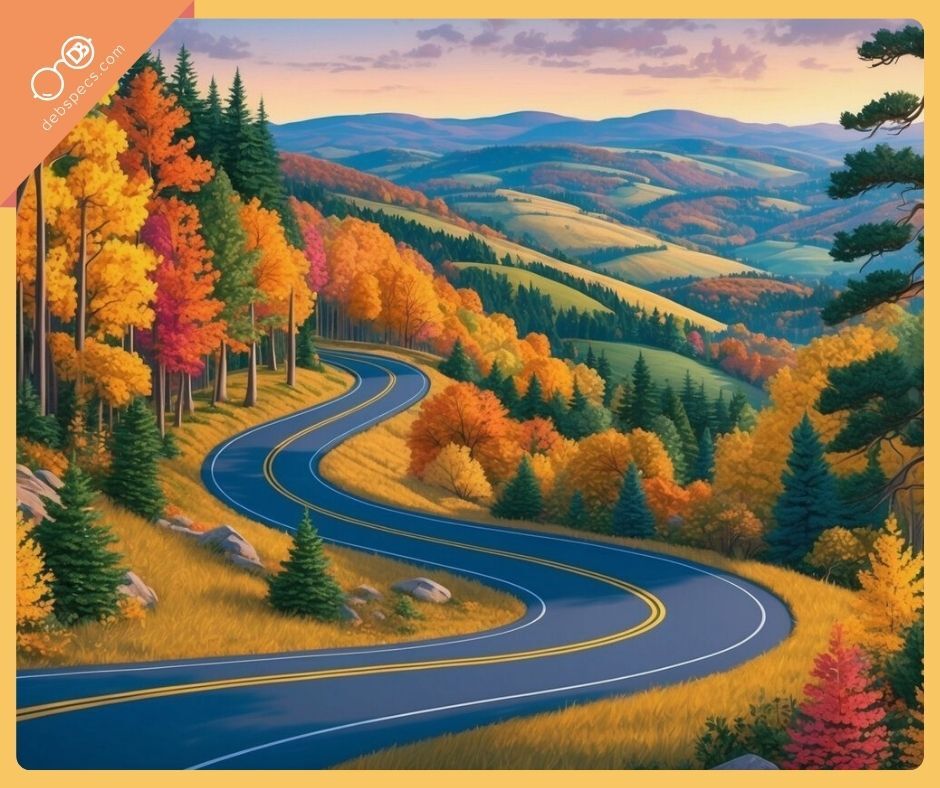
Must-See Scenic Stops
Add these destinations to your list:
- Acadia National Park (Maine): Dramatic Atlantic views with fiery maples.
- Great Smoky Mountains (Tennessee/North Carolina): Clingmans Dome is a photographer’s dream.
- Blue Ridge Parkway (Virginia/North Carolina): Endless overlooks, each with its own magic.
- Adirondack Park (New York): Peaceful lakes reflecting the fall palette.
Photography Tip: Shoot early or late in the day for soft golden light. Use a polarizing filter to deepen colors and reduce glare.
 Rest Stops: Cozy Inns or Rustic Campsites?
Rest Stops: Cozy Inns or Rustic Campsites?
- Cozy Accommodations: Think fireplaces, bed-and-breakfasts, and quaint rentals. Perfect after long drives.
- Camping: Crisp nights, fewer crowds, starry skies—but bring a warm sleeping bag.
Choose based on your comfort level. A mix of both can be the perfect balance.

Local Eats You Can’t Miss
Part of the fun is tasting the season:
- Apple cider donuts (best eaten warm at a roadside farm stand)
- Pumpkin pies and spiced lattes
- Hearty stews made with local squash and root vegetables
Stopping at orchards and farm stands supports local growers and adds authentic flavor to your journey.
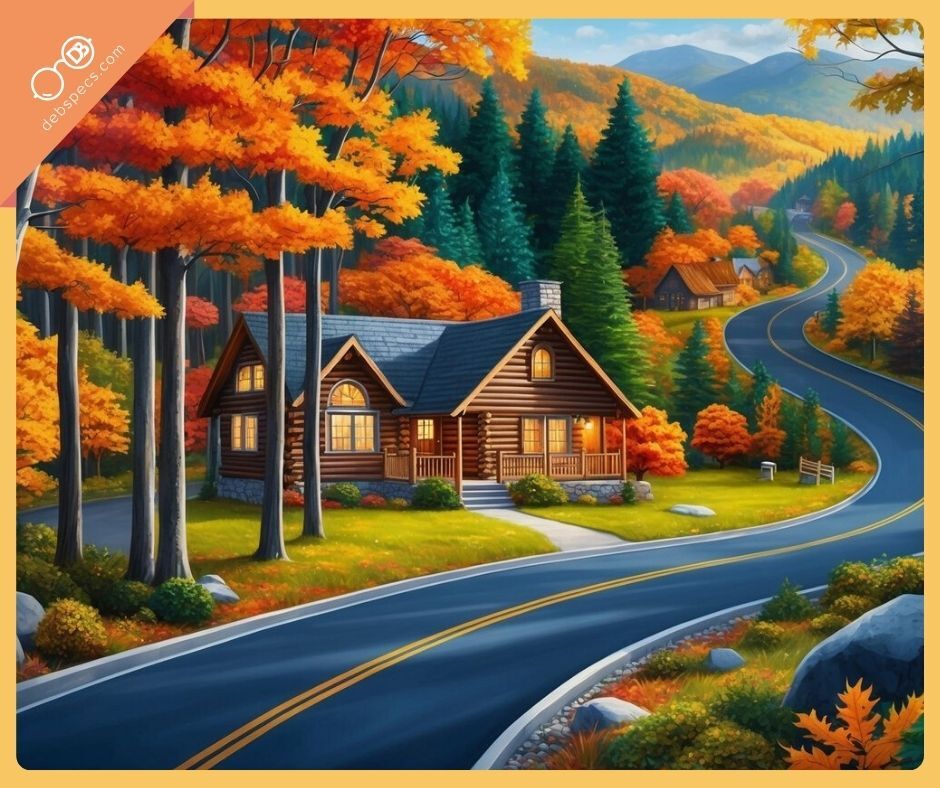
Traveling Sustainably
Enjoy nature while protecting it.
- Use a fuel-efficient car or carpool.
- Pack light and bring reusable water bottles and bags.
- Support local businesses instead of chain stores.
Small choices make your road trip greener and more meaningful.
Be Ready for the Unexpected
Fall weather is unpredictable. A little prep goes a long way:
- For weather: Waterproof jackets, layers, and a reliable forecast app.
- For car issues: Roadside assistance, a toolkit, jumper cables, and a paper map backup.
- For comfort: Blankets, snacks, and water in case you get stuck waiting out a storm.
TL;DR: Fall Road Trip Checklist
- Catch peak foliage: check regional maps
- Pack smart layers + cozy extras
- Prep your car (oil, tires, gas, wipers)
- Don’t forget your readers (bring a spare pair)
- Mix GPS with a paper map backup
- Book cozy inns or plan camping nights ahead
- Taste seasonal treats along the way
- Travel sustainably and leave no trace
FAQs
Q: Do I really need special reading glasses for a road trip?
A: Yes! Quality readers make maps, signs, and menus easier to read—without the constant squinting or frustration.
Q: When’s the best time to plan a fall foliage trip?
A: Late September through early November, depending on the region. Always check updated foliage maps.
Q: What’s the #1 thing people forget to pack?
A: A backup pair of reading glasses (seriously—you’ll thank yourself).
Q: Are paper maps outdated?
A: Not at all. They’re a lifesaver when GPS signal drops. Think of them as your old-school insurance plan.
Final Word
A fall foliage road trip is about slowing down, savoring the view, and making memories. With a little planning (and a stylish pair of DebbySpecs readers in your bag), you’ll be ready for every winding road, scenic overlook, and roadside café along the way.
Because seeing clearly—and looking chic while you do it—makes the journey just as rewarding as the destination.

